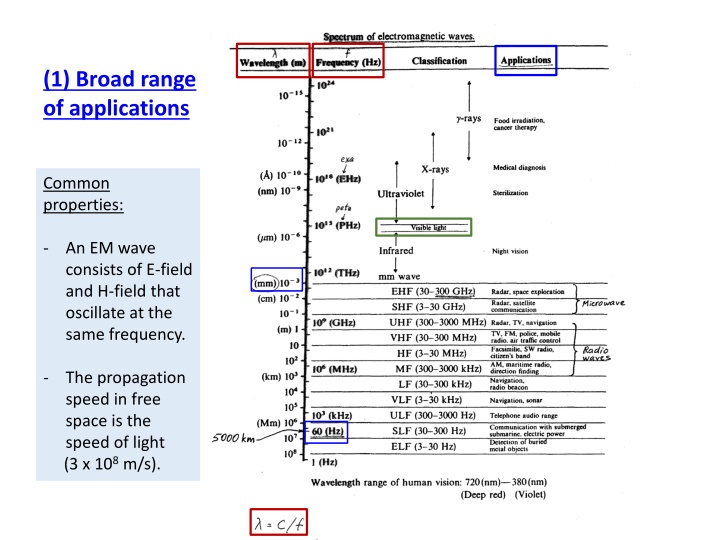
Electromagnetic Theory and Applications Overview
Delve into the fundamentals of electromagnetic theory, its wide range of applications, and the critical role it plays in electrical engineering. Explore concepts such as EM waves, circuit theory, electromagnetic compatibility, and the practical implications reflected in the IEEE average salary survey for various specialties.
Download Presentation

Please find below an Image/Link to download the presentation.
The content on the website is provided AS IS for your information and personal use only. It may not be sold, licensed, or shared on other websites without obtaining consent from the author. If you encounter any issues during the download, it is possible that the publisher has removed the file from their server.
You are allowed to download the files provided on this website for personal or commercial use, subject to the condition that they are used lawfully. All files are the property of their respective owners.
The content on the website is provided AS IS for your information and personal use only. It may not be sold, licensed, or shared on other websites without obtaining consent from the author.
E N D
Presentation Transcript
(1) Broad range of applications Common properties: - An EM wave consists of E-field and H-field that oscillate at the same frequency. - The propagation speed in free space is the speed of light (3 x 108 m/s).
(2) Electromagnetics is the most fundamental branch of electrical engineering. Circuit theory is nothing but a low-frequency approximation (l << , h << for lumped circuits or h << for distributed circuits) to electromagnetic theory. As frequency increases, the circuit theory falls apart and the electromagnetic theory must be used.
(3) Electromagnetic compatibility (EMC) The ability of a device (a) to function in the presence of various external EM disturbances and (b) not to interfere with the operation of other devices located nearby.
IEEE Average Salary Survey Specialty 2015 Tax Year 2014 Tax Year % Change Communications Technology $152,500 $150,000 + 1.67 Circuits & Devices $144,007 $143,008 + 0.70 Signals & Applications $142,792 $141,062 + 1.23 Computers $138,941 $132,279 + 5.03 Electromagnetics & Radiation $137,912 $130,368 + 5.79 Engineering & Human Environment $132,667 $140,000 - 5.24 Systems & Control $130,000 $119,572 + 8.72 Industrial Applications $126,600 $120,000 + 5.50 Energy & Power Engineering $121,000 $116,175 + 4.15






